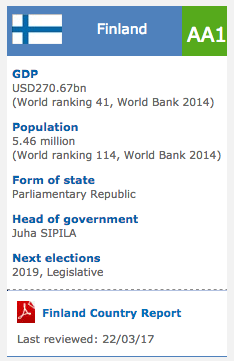Georgia: Georgia Art / Culture Profile 2012
2012/03/12
Georgia Art / Culture Profile 2O12
The traditional Georgian applied art is mainly represented by high art items from ceramics, metal, wood, and bones. Georgia is famous for its fine jewelry, engraving on metal, armory.
The first samples of ceramic ware appeared on the territory of Georgia in the 7 th millennium BC. Later, in the 4 th —3 rd millennia BC along with ceramics emerged first metal items. The first silver objects found on the territory of Georgia are dated back the 3 rd millennium BC. In the next millennium the quantity of jewelry increased. At that time the jewelry business reached its blooming. The jewelers mastered the art of filigree, stamping, and molding to perfection.
But the art's apogee came in the 11 th — 13 th centuries.
The period of numerous conquests reflected on Georgian applied arts. It got under the influence of European, Persian, and Asian art but managed to preserve the traditional techniques and deep national content.
In the 19 th century the art of goldsmiths of Georgia reached its highest stage of development. The best samples of golden table items (cups, bowls, jugs, and kantsi-horns) and ornaments were created in Tbilisi , Akhaltsikhi, Gori, Kutaisi , Zugdidi and Telavi. All of them were richly decorated by stamping, filigree, and niello.
From ancient times Georgian craftsmen used enamels when processing precious metals. This art was greatly developed in the 9 th — 12 th centuries. Enamel, especially of plique-a-jour type, was used for decoration of both religious and secular purpose: church utensils, tableware, belts, rings, and necklaces. Even now this art has not lost its power; Georgian masters continue applying the enameling techniques.
In the 18 th – 20 th centuries there were several ceramic centers where ceramic ware and building materials (bricks, tiles) were produced.
In Eastern Georgia they were in Tbilisi, Mtskheta, Telavi, Ninotsminda, Gori, Tskhvati. In the Western Georgia — Shrosha, Kutaisi , Atsana, Namikovou and so on.
The big role in the life of Georgian people was played by glazed ceramics. The craftsmen always tried to give their products a beautiful look and refined shapes.
Georgian national art of beadwork is centuries-old. It is still used by Georgian highlanders. From the 18 th century beadwork was the most popular in Tbilisi , Gori, Kutaisi , Akhalsikhi.
The Georgian national arts and crafts are attractive in their simplicity, plasticity and unique traditional forms.
The culture of Georgia has evolved over the country's long history, providing it with a unique national culture and a strong literary tradition based on the Georgian language and alphabet. This has provided a strong sense of national identity that has helped to preserve Georgian distinctiveness despite repeated periods of foreign occupation and attempted assimilation.
Culture of old Georgia
The Georgian alphabet is traditionally said to have been invented in the 5th century BC and reformed by King Parnavaz I of Iberia in 284 BC, however, most modern scholarship puts the date at some time in the 5th century AD, when the earlist examples can be found.
Georgia's medieval culture was greatly influenced by Orthodox Christianity and the Georgian Orthodox and Apostolic Church, which promoted and often sponsored the creation of many works of religious devotion. These included churches and monasteries, works of art such as icons, and hagiographies of Georgian saints. As well as this, many secular works of national history, mythology and hagiograpy were also written.
Culture of modern Georgia
During the modern period, from about the 17th century onwards, Georgian culture has been greatly influenced by cultural innovations imported from elsewhere in Europe.
The first Georgian-language printing house was established in the 1620s in Italy and the first one in Georgia itself was founded in 1709 in Tbilisi.
Georgian theatre has a long history; its oldest national form was the "Sakhioba" (extant from the 3rd century BC to the 17th century AD). The Georgian National Theatre was founded in 1791 in Tbilisi, by the writer, dramatist and diplomat Giorgi Avalishvili (1769-1850). Its leading actors were Dimitri Aleksi-Meskhishvili, David Machabeli, David Bagrationi, Dimitri Cholokashvili and others.
In Tbilisi the Museum of the Caucasus was founded in 1845. In the 1920s it became the State Museum of Georgia. The Tbilisi State Theatre of Opera and Ballet established in 1851.
Greatest representatives of Georgian culture of the XIX century were: Nikoloz Baratashvili (poet), Alexander Orbeliani (writer), Vakhtang Orbeliani (poet), Dimitri Kipiani (writer), Grigol Orbeliani (poet), Ilia Chavchavadze (writer and poet), Akaki Tsereteli (poet), Alexander Kazbegi (writer), Rapiel Eristavi (poet), Mamia Gurieli (poet), Iakob Gogebashvili (writer), Simon Gugunava (poet), Babo Avalishvili-Kherkheulidze (actor), Nikoloz Avalishvili (actor), Nikoloz Aleksi-Meskhishvili (actor), Romanoz Gvelesiani (painter), Grigol Maisuradze (painter), Alexander Beridze (painter), Ivane Machabeli (translator), Okropir Bagrationi (translator), Sardion Aleksi-Meskhishvili (translator), Kharlampi Savaneli (opera singer), Pilimon Koridze (opera singer), Lado Agniashvili (folk singer), Alioz Mizandari (composer), etc.
The first cinema in Georgia was established in Tbilisi on November 16, 1896. The first Georgian cinema documentary ("Journey of Akaki Tsereteli in Racha-Lechkhumi") was shot in 1912 by Vasil Amashukeli (1886-1977), while the first Georgian feature film ("Kristine") was shot in 1916 by Alexandre Tsutsunava (1881-1955).
The Tbilisi State Academy of Art was founded in 1917.
Georgian culture suffered under the rule of the Soviet Union during the 20th century, during which a policy of Russification was imposed but was strongly resisted by many Georgians. Since the independence of Georgia in 1991, a cultural resurgence has taken place, albeit somewhat hampered by the country's economic and political difficulties in the post-Soviet era.
- Georgia News
-
- AFGHANISTAN: UNWTO: International tourism – strongest half-year results since 2010
- GEORGIA: US Vice President Mike Pence To Visit Georgia
- GEORGIA: Kremlin Aide Visits Abkhazia, Speaks Of ‘Favorable’ Political Environment
- AFGHANISTAN: Higher earning Why a university degree is worth more in some countries than others
- GEORGIA: Georgia Ships High Enriched Uranium To Russia
- GEORGIA: Kremlin Aide Visits Sokhumi, Discusses Abkhaz Turkish Ties
- Trending Articles
-
- SOUTH AFRICA: Nigeria and South Africa emerge from recession
- BAHRAIN: Bahrain issues new rules to encourage fintech growth
- UZBEKISTAN: Former deputy PM named Uzbekistan Airways head
- ARUBA: Director of Tourism Turks and Caicos after Irma: Tourism, visitors, hotels current status
- ANGOLA: Angola: Elections / 2017 - Provisional Data Point Out Qualified Majority for MPLA
- WORLD: How fair is our food? Big companies take reins on sourcing schemes













